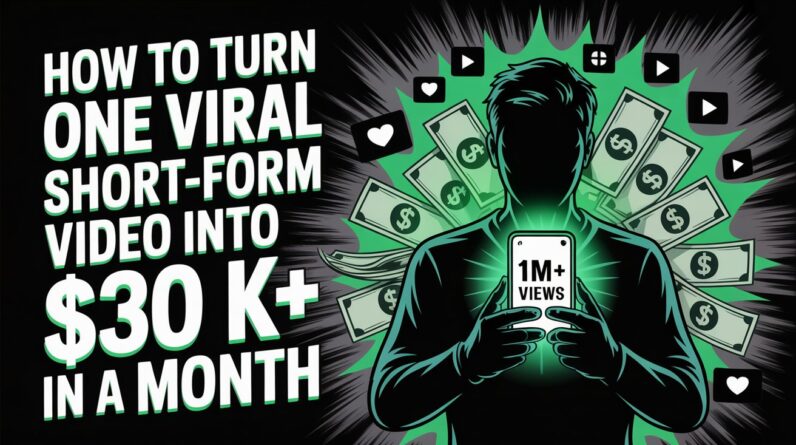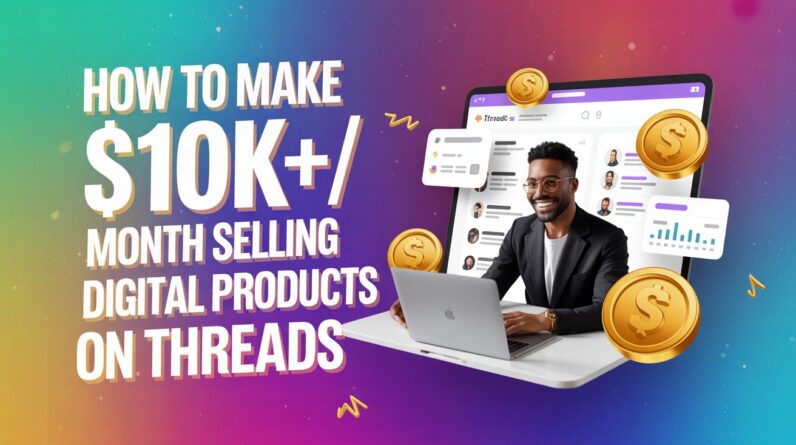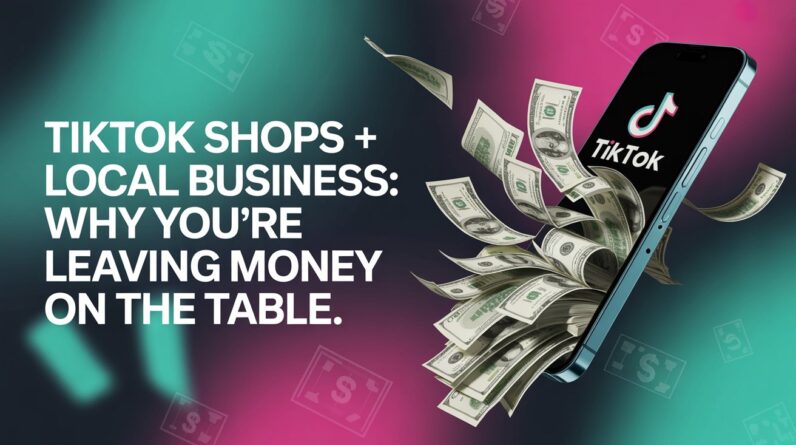
If you’re an online marketer, affiliate promoter, or small business owner struggling to get your messages seen, safelists offer a powerful yet underused path to real results. These opt-in email communities let you reach engaged audiences who actually want to see promotional content – no spam complaints, no deliverability nightmares.
This guide is perfect for you if you’re:
-
New to safelist marketing and want to start smart
-
Already using safelists but not seeing the profits you expected
-
Looking for fresh traffic sources that won’t break the bank
Here’s what you’ll discover:
You’ll learn how to build a profitable safelist strategy that turns email credits into actual sales, not just clicks. We’ll cover the smart tactics that maximize your revenue from each campaign, including timing secrets and message optimization that most marketers get wrong. Finally, you’ll master advanced techniques like credit farming and cross-promotion that separate casual users from safelist pros who bank serious commissions.
Ready to turn your inbox into a goldmine? Let’s start building your safelist empire.
Understanding Safelists and Their Marketing Power
What safelists are and how they function
Safelists are specialized email marketing networks where members agree to receive promotional emails from other members in exchange for the right to send their own marketing messages to the list. Think of it as a mutual agreement club where everyone gets to promote while everyone else receives promotions.
When you join a safelist, you typically earn credits by reading emails, clicking links, or visiting websites. You then spend these credits to send your promotional messages to other members. The system creates a win-win scenario where active participation gets rewarded with more exposure for your offers.
Most safelists operate on different membership tiers. Free members usually receive limited sending privileges and must earn credits through engagement. Premium members pay for enhanced features like larger sending volumes, priority placement, and advanced tracking capabilities. Some safelists also offer lifetime memberships that provide unlimited sending privileges.
The key mechanism that makes safelists work is the credit system. You earn credits by engaging with others’ promotions, and you spend credits to get your message in front of the community. This creates an active, engaged audience that’s already primed to look at marketing messages – unlike cold email lists where recipients might ignore or delete promotional content immediately.
Why safelists outperform traditional email marketing
Your traditional email campaigns face massive hurdles that safelists naturally overcome. When you send emails to cold lists, you’re fighting spam filters, dealing with low open rates, and reaching people who never asked to see promotional content. Safelists flip this entire dynamic on its head.
Safelist members have explicitly agreed to receive marketing messages. They’re not just tolerating your emails – they’re actively looking for opportunities and offers. This fundamental difference in audience mindset creates dramatically higher engagement rates compared to traditional email campaigns.
The targeting capabilities within safelists often surpass what you’ll find with conventional email services. Many safelists allow you to segment by member activity level, interests, or spending behavior. You can focus your messages on the most active members who are most likely to engage with your offers.
Delivery rates in quality safelists typically exceed 95% because these networks maintain their own email infrastructure and relationships with major inbox providers. Your messages aren’t getting lost in spam folders or blocked by aggressive filters. They’re landing directly in inboxes of people who want to see them.
Cost-effectiveness becomes obvious when you compare results. While you might pay significant amounts for traditional email marketing platforms with questionable delivery rates, many safelists offer lifetime memberships or very affordable monthly fees with guaranteed inbox placement.
The psychology behind safelist member engagement
Safelist members operate under a completely different psychological framework than typical email recipients. They’ve made a conscious decision to participate in a promotional ecosystem, which means they approach your messages with a completely different mindset.
The reciprocity principle drives much of the engagement you’ll see in safelists. Members understand that their participation in viewing and clicking others’ promotions directly benefits their own promotional efforts. This creates a cooperative environment where people are genuinely motivated to engage with your content.
Active safelist participants are typically entrepreneurs, marketers, or people actively seeking income opportunities. This audience segment is naturally more receptive to business propositions, training offers, and money-making opportunities than the general population. They’re already in a mindset of looking for the next opportunity or solution to improve their situation.
The credit system creates a gamification element that traditional email marketing lacks. Members feel rewarded for their engagement through the credits they earn, which they can then use for their own promotional campaigns. This positive reinforcement loop keeps members coming back and staying active within the community.
Scarcity plays a role too. Many safelist promotions are time-sensitive or limited in nature, creating urgency that drives faster decision-making. Members know that good opportunities move quickly in these communities, so they tend to act faster than they might with traditional marketing messages.
Common misconceptions about safelist effectiveness
Many marketers dismiss safelists based on outdated information or limited experience with poor-quality lists. The biggest misconception is that safelist members are just “freebie seekers” who never buy anything. Quality safelists actually contain serious entrepreneurs and marketers who regularly invest in tools, training, and opportunities that help grow their businesses.
Another widespread myth suggests that safelist traffic doesn’t convert because members are only there to earn credits. While credit-earning is part of the equation, successful safelist members are actively building their businesses and looking for legitimate opportunities. The key is matching your offer to their needs and presenting it professionally.
Some people believe safelists are outdated compared to social media marketing or other modern channels. This overlooks the fact that email marketing consistently delivers the highest ROI of any digital marketing channel. Safelists simply represent a specialized, highly targeted segment of email marketing with built-in engagement mechanisms.
The assumption that all safelists are the same quality leads many marketers to give up after trying one or two low-quality lists. Premium safelists with active moderation, engaged communities, and strong delivery rates perform dramatically different than free, unmoderated lists filled with inactive members.
There’s also a misconception that you need to send to massive lists to see results. Quality often trumps quantity in safelist marketing. A smaller list of highly active, engaged members will consistently outperform a larger list of inactive subscribers who rarely engage with promotional content.
Building Your Profitable Safelist Strategy
Selecting High-Quality Safelists for Maximum Reach
Your success depends heavily on the safelists you choose to work with. Not all safelists are created equal, and picking the wrong ones can waste your time and money while delivering poor results.
Start by researching safelists with active, engaged member bases. Look for platforms that require email confirmation and have strict anti-spam policies. These indicators show you’re dealing with legitimate operations that attract serious marketers rather than tire-kickers.
Check the safelist’s delivery rates and member activity levels. A safelist with 50,000 members might sound impressive, but if only 5% are actively reading emails, you’re better off with a smaller list of 10,000 engaged subscribers. Ask current members about their experiences and look for testimonials that mention actual results, not just generic praise.
Pay attention to the safelist’s niche focus. Some cater to specific industries or interests, which can be goldmines if they align with your target audience. A health and wellness safelist will serve you better than a general marketing list if you’re promoting fitness products.
Consider the credit system and mailing frequency allowed. Some safelists let you mail daily, while others restrict you to weekly sends. Choose platforms that match your campaign schedule and budget. Free safelists can work, but upgraded memberships typically offer better placement, higher credit ratios, and priority delivery.
Crafting Compelling Subject Lines That Get Opened
Your subject line makes or breaks your campaign before anyone even sees your content. You have mere seconds to grab attention in a crowded inbox, so every word counts.
Create curiosity without being misleading. Subject lines like “The Secret They Don’t Want You to Know” work because they promise insider information. However, your email content must deliver on that promise, or you’ll lose credibility fast.
Use numbers and specific benefits whenever possible. “5 Ways to Double Your Income This Month” performs better than “Make More Money” because it’s concrete and actionable. Numbers suggest organized, valuable content that’s easy to consume.
Personalization goes beyond just inserting someone’s name. Reference their interests, location, or recent behavior if you have that data. “John, Your Chicago Marketing Strategy Needs This” feels more relevant than a generic greeting.
Keep your subject lines between 30-50 characters when possible. Mobile devices truncate longer subjects, and you risk losing impact. Test different lengths to see what works best with your audience.
Avoid spam trigger words like “Free,” “Guaranteed,” “Act Now,” or excessive punctuation and capital letters. These can land your emails in spam folders before they’re ever seen. Instead, focus on value-driven language that speaks to your reader’s desires and pain points.
Creating Irresistible Email Content That Converts
Your email content needs to hook readers immediately and guide them toward your desired action. Start with a strong opening that connects to your subject line and delivers on its promise within the first few sentences.
Write like you’re talking to a friend, not delivering a corporate presentation. Use short paragraphs, conversational language, and break up text with bullet points or numbered lists. People scan emails quickly, so make your key points easy to spot.
Focus on benefits, not features. Instead of saying “Our software has advanced analytics,” explain how it helps: “See exactly which marketing campaigns bring you the most customers.” Your readers care about what your product or service does for them, not its technical specifications.
Include social proof whenever possible. Customer testimonials, success stories, and specific results build credibility. “Sarah increased her sales by 300% in just 60 days” is more powerful than generic claims about your product’s effectiveness.
Create a clear, single call-to-action that stands out visually. Don’t confuse readers with multiple options. Whether you want them to click a link, make a purchase, or sign up for something, make that action obvious and easy to complete.
End with urgency or scarcity when appropriate. Limited-time offers or exclusive bonuses can push fence-sitters to take action. Just make sure your urgency is real – fake countdown timers and false scarcity damage trust.
Timing Your Campaigns for Optimal Results
When you send your emails can significantly impact your open rates and conversions. Different audiences respond better at different times, so you need to understand your specific market’s behavior patterns.
Test sending times across different days and hours. Many marketers assume Tuesday through Thursday mornings work best, but safelist audiences often behave differently than typical email subscribers. Some respond better to evening sends when they’re browsing for opportunities, while others prefer weekend campaigns when they have more time to read and consider offers.
Consider your audience’s time zone and lifestyle. If you’re targeting stay-at-home parents, mid-morning sends might work well after kids are at school. For business professionals, lunch hour or early evening could be optimal. International audiences require even more careful timing consideration.
Monitor your competition’s sending patterns. If everyone in your niche sends on Tuesday mornings, you might get better results by choosing a less crowded time slot. Your email will stand out more when it’s not competing with dozens of others arriving simultaneously.
Frequency matters as much as timing. Some audiences respond well to daily emails, while others prefer weekly contact. Start conservatively and increase frequency based on engagement rates and unsubscribe patterns. Consistent scheduling often works better than random sending because subscribers know when to expect your content.
Track your metrics for each sending time and day combination. Open rates, click-through rates, and conversion rates will tell you when your specific audience is most receptive to your messages.
Maximizing Revenue Through Smart Safelist Tactics
Cross-Promoting Multiple Offers for Increased Profits
Your safelist campaigns become exponentially more profitable when you think beyond single-offer promotions. Instead of putting all your eggs in one basket, diversify your approach by running multiple complementary offers simultaneously. This strategy works because different subscribers respond to different value propositions, even within the same niche.
Start by identifying offers that naturally complement each other. If you’re promoting a weight loss guide, pair it with a fitness tracking app or healthy recipe collection. Create a systematic rotation where you promote different offers on different days of the week, allowing you to capture various audience segments while maintaining consistent exposure.
The key to successful cross-promotion lies in tracking which combinations generate the highest combined revenue. You might discover that promoting a low-ticket offer on Monday followed by a high-ticket offer on Wednesday creates a perfect buying sequence. Some subscribers need to see value through smaller purchases before they trust you with larger investments.
Consider creating offer bundles exclusively for your safelist audience. This approach positions you as someone who provides exclusive deals, increasing your perceived value and encouraging faster purchasing decisions. Your safelist subscribers will begin to anticipate your emails, knowing they contain special opportunities not available elsewhere.
Building Your Own Subscriber List from Safelist Traffic
Transform every safelist campaign into a list-building opportunity by capturing leads before directing traffic to your primary offer. This two-step approach might seem like it adds friction, but it actually increases your long-term profitability by building an asset you completely control.
Create compelling lead magnets that align with your main offers. If you’re promoting business opportunities, offer a free report about online income strategies. Position this lead magnet as a prerequisite to understanding your main offer, making the opt-in feel logical rather than forced.
Your capture pages for safelist traffic need specific elements that differ from regular squeeze pages. Safelist visitors expect quick access to information, so your headlines must be direct and benefit-focused. Skip the lengthy video explanations and focus on bullet points that highlight immediate value.
Once you capture these leads, nurture them with a targeted email sequence that builds trust and demonstrates your expertise. Many marketers make the mistake of immediately pitching their main offer to new subscribers. Instead, provide genuine value first. Share case studies, insider tips, or exclusive content that showcases your knowledge.
The real magic happens when you combine your captured leads with your cross-promotion strategy. Your new subscribers become the audience for your multiple offers, creating a compounding effect where each safelist campaign feeds into your bigger marketing ecosystem.
Using Split Testing to Improve Conversion Rates
Split testing transforms your safelist marketing from guesswork into a science. Every element of your campaigns contains opportunities for improvement, from subject lines to call-to-action buttons. The marketers who consistently outperform their competition are those who systematically test and optimize their campaigns.
Begin with your email subject lines, as these determine whether your message gets opened. Test emotional triggers against logical benefits, questions against statements, and urgency-based headlines against curiosity-driven ones. Run each test for at least 100 opens to ensure statistical significance.
Your email content provides numerous testing opportunities. Experiment with different story angles – personal success stories often outperform third-party testimonials. Test short, punchy emails against longer, story-driven messages. Many safelist users prefer quick, scannable content, but your specific audience might respond differently.
Don’t overlook testing your landing pages and sales presentations. The traffic quality from safelists often differs from other sources, meaning your standard high-converting pages might underperform. Test different page lengths, color schemes, and pricing presentations specifically for your safelist traffic.
Document your results meticulously. Create a testing calendar that ensures you’re always running experiments without overwhelming your system. Small improvements compound over time – a 10% boost in open rates combined with a 15% increase in click-through rates can double your overall campaign profitability.
Your testing should extend to timing and frequency. Some safelist audiences respond better to morning emails, while others prefer evening delivery. Test different sending schedules and pay attention to engagement patterns. The goal is discovering your unique winning combination that maximizes both immediate response and long-term subscriber value.
Advanced Techniques for Safelist Domination
Leveraging Automation Tools for Consistent Campaigns
Your safelist success depends on consistency, and automation tools become your secret weapon for maintaining regular contact with thousands of members. You’ll want to invest in email marketing platforms that integrate seamlessly with safelist databases, allowing you to schedule campaigns weeks or months in advance. Set up autoresponder sequences that nurture your leads systematically, delivering value-packed content while promoting your offers at strategic intervals.
Smart marketers use tools like GetResponse, AWeber, or specialized safelist management software to track open rates, clicks, and conversions across different campaigns. You can create multiple email sequences for different audience segments, ensuring each group receives targeted messages that resonate with their specific interests. Don’t forget to automate your follow-up sequences for non-openers – these often generate surprising results when your original message gets lost in crowded inboxes.
Consider using social media scheduling tools to cross-promote your safelist campaigns on platforms like Facebook and Twitter. This multi-channel approach amplifies your reach beyond traditional email boundaries.
Creating Viral Campaigns That Members Share
You need campaigns that practically force members to share your content with their networks. Start by crafting irresistible subject lines that create curiosity gaps – people can’t help but open emails when they feel like they’re missing something important. Your content should provide immediate value, whether that’s exclusive insights, free tools, or insider information that members feel compelled to share.
Design your emails with built-in sharing mechanisms. Include “forward to a friend” buttons, social media sharing links, and referral incentives that reward members for spreading your message. Create content series that build anticipation – when members know they’re getting part two of a valuable strategy next week, they’re more likely to share part one with friends who might want to follow along.
Viral campaigns often center around timely topics or trending issues in your niche. You can tap into current events, industry news, or seasonal themes that naturally encourage discussion and sharing. Contest-based campaigns work exceptionally well – when you offer prizes for the most referrals or shares, members become active promoters of your content.
Building Relationships with Top Safelist Owners
Your success accelerates dramatically when you develop genuine relationships with influential safelist owners. Start by becoming an active, contributing member of their communities before pitching any business propositions. Comment thoughtfully on their content, share their posts, and engage authentically with their material.
Reach out with collaboration ideas that benefit both parties. You might propose joint ventures, content swaps, or cross-promotional arrangements that expand both of your audiences. Many successful safelist marketers start by offering to write guest content or provide free resources to established owners’ lists.
Attend industry conferences and networking events where these influencers gather. Face-to-face meetings create stronger connections than endless email exchanges. When you meet someone in person, they’re more likely to remember you and consider partnership opportunities. Follow up consistently but respectfully – staying on their radar without becoming a nuisance requires finesse.
Consider offering valuable services to top owners, such as technical support, content creation, or promotional assistance for their launches. When you become genuinely helpful to their business operations, you naturally evolve from an outsider trying to get in to an insider they want to work with.
Scaling Your Efforts Across Multiple Platforms
You can’t afford to put all your eggs in one safelist basket. Diversification protects your business and multiplies your potential reach exponentially. Start by identifying the top-performing safelists in your niche, then gradually expand to complementary platforms that serve similar audiences.
Create a systematic approach to platform management. You’ll need different email addresses, tracking systems, and content calendars for each platform to avoid confusion and maintain professional standards. Develop platform-specific strategies since each safelist has unique rules, culture, and optimal posting times.
Don’t spread yourself too thin initially. Master two or three platforms before expanding to additional ones. You want to maintain quality engagement rather than becoming a generic broadcaster across dozens of mediocre safelists. Focus on platforms where you can build genuine relationships and deliver consistent value.
Track performance metrics across all platforms to identify your highest-converting sources. Some safelists might generate more clicks, while others produce better-quality leads or higher conversion rates. This data helps you allocate your time and resources more effectively, doubling down on platforms that deliver the best results while gradually phasing out underperformers.
Measuring and Optimizing Your Safelist Performance
Key metrics that determine campaign success
Your safelist success depends on tracking the right numbers. Open rates tell you how compelling your subject lines are – aim for 20-30% as your benchmark. Click-through rates reveal whether your email content motivates action, with 3-8% being solid performance for most niches. Conversion rates are your ultimate measure of success, showing how many clicks turn into actual sales or sign-ups.
Don’t overlook your list growth rate. Monitor how many new subscribers you’re gaining versus those who unsubscribe. A healthy safelist should show steady growth with minimal churn. Your email delivery rate matters too – if your messages aren’t reaching inboxes, your other metrics become meaningless.
Revenue per email (RPE) gives you a clear picture of your campaign’s financial impact. Calculate this by dividing total revenue by emails sent. Your cost per acquisition (CPA) shows how much you’re spending to gain each customer through safelist marketing. Compare this against your customer lifetime value to ensure profitability.
Tools for tracking clicks, conversions, and ROI
You need reliable tracking tools to measure your safelist performance accurately. Google Analytics remains your foundation – set up UTM parameters for each safelist campaign to track traffic sources and conversions. Create custom campaigns in Analytics to see exactly which safelists drive the most valuable visitors.
ClickMagick and Voluum offer advanced click tracking with real-time data. These platforms let you create tracking links that capture detailed information about your traffic, including geographic location, device type, and conversion paths. You can split-test different landing pages and offers to optimize your results.
For email-specific tracking, AWeber, GetResponse, and Mailchimp provide built-in analytics showing open rates, click rates, and subscriber behavior. Many safelist platforms offer their own tracking dashboards, giving you insights into your ad performance within their network.
Conversion tracking pixels are essential for measuring actual sales. Install Facebook Pixel, Google Ads conversion tracking, or your affiliate network’s tracking codes on your thank-you pages. This connects the dots between safelist clicks and actual revenue.
Consider using link shorteners like Bitly or TinyURL with tracking capabilities. These tools provide additional data layers and make your links more professional in safelist ads.
Adjusting strategies based on performance data
Your data tells a story – learn to read it. When you see low open rates, test different subject lines. Try urgency (“24 hours left”), curiosity (“The secret they don’t want you to know”), or benefit-focused headlines (“Double your income in 30 days”).
Poor click-through rates signal content problems. Your email body isn’t compelling enough to drive action. Test shorter versus longer emails, different calls-to-action, and various formatting styles. Sometimes a simple text email outperforms fancy HTML designs in safelists.
High click-through rates but low conversions point to landing page issues. Your traffic is interested enough to click, but your sales page isn’t converting. Test different headlines, offers, pricing, and page layouts. Make sure your landing page matches the promise in your safelist ad.
If certain safelists consistently underperform, shift your budget to better-performing platforms. Don’t stick with a safelist just because it’s cheap if it’s not delivering quality traffic. Your time and money are better invested in safelists that produce results.
Monitor your best-performing ads and create variations. If an ad pulls well, test similar angles, different images, or modified headlines. Scale what works by increasing your ad frequency or expanding to similar safelists.
Track your performance by day of the week and time of day. Many safelists show higher engagement on weekdays versus weekends. Adjust your sending schedule based on when your audience is most active and responsive.
Safelists offer you a direct path to engaged audiences who actually want to hear what you have to offer. By building your strategy around quality content, smart timing, and genuine relationship-building, you can turn these email communities into reliable income streams. The key lies in treating your fellow members as real people, not just numbers on a list, while consistently delivering value that makes them look forward to your messages.
Your safelist success won’t happen overnight, but the results speak for themselves when you stick to proven tactics and keep refining your approach. Start with one or two quality safelists, master the fundamentals, and gradually expand your reach as you see what works best for your audience. Track your metrics, test different approaches, and remember that the most successful safelist marketers are those who focus on building trust and providing real solutions to their subscribers’ problems.
Need more help? Check out my free safelist marketing training.






